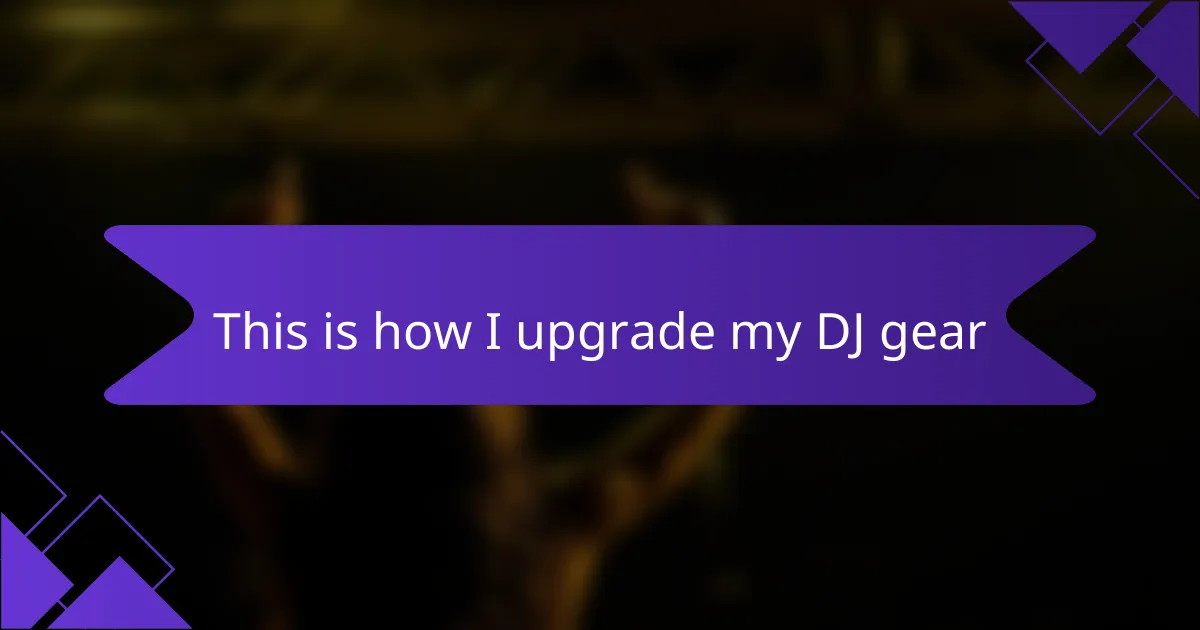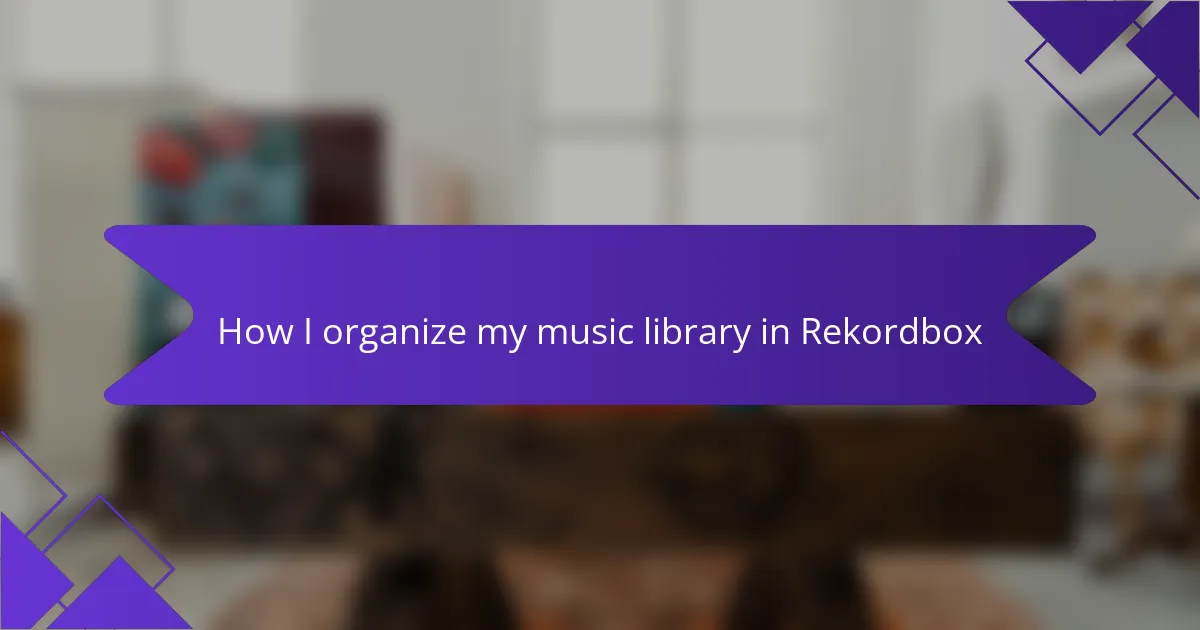Key takeaways
- Live instrumentation adds energy and spontaneity to DJ performances, engaging audiences in a unique and memorable way.
- Effective collaboration between live musicians and DJs requires thorough preparation, communication, and balancing sound levels for an enhanced experience.
- Integrating live instruments evokes deep emotional connections, transforming performances into unforgettable moments.
- The future of DJing may see greater integration of live instrumentation, allowing for innovative and diverse musical experiences.
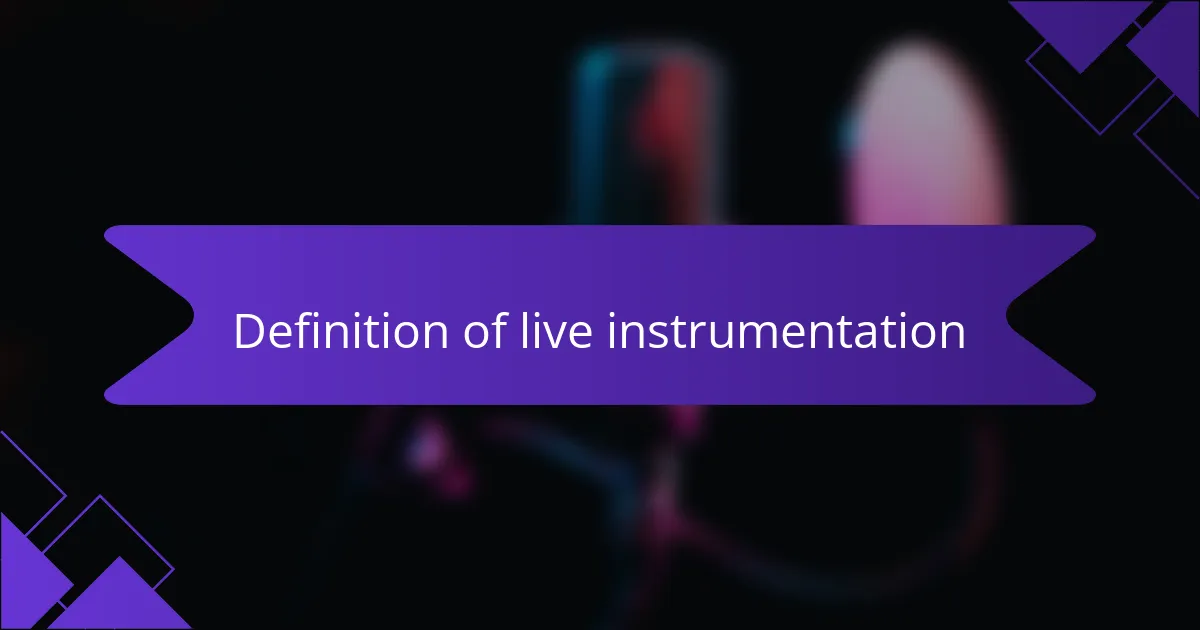
Definition of live instrumentation
Live instrumentation refers to the use of live musical instruments during a performance, as opposed to pre-recorded tracks. I’ve always found that there’s something incredibly magnetic about the sound of real instruments being played in the moment. It can inject an energy into a DJ set that you simply can’t replicate with samples alone.
When a live guitarist or drummer joins the mix, it creates a dynamic interaction that engages the audience in a unique way. Have you ever felt that rush when a live musician improvises in sync with a DJ’s rhythm? It’s like watching a conversation unfold between artists on stage, and the atmosphere transforms.
Moreover, live instrumentation can elevate a performance to new heights by adding layers of depth and texture. I recall a night when a keyboardist improvised beautifully over a set, instantly making the music more immersive. In those moments, it’s clear that live instrumentation brings something truly special to the experience.
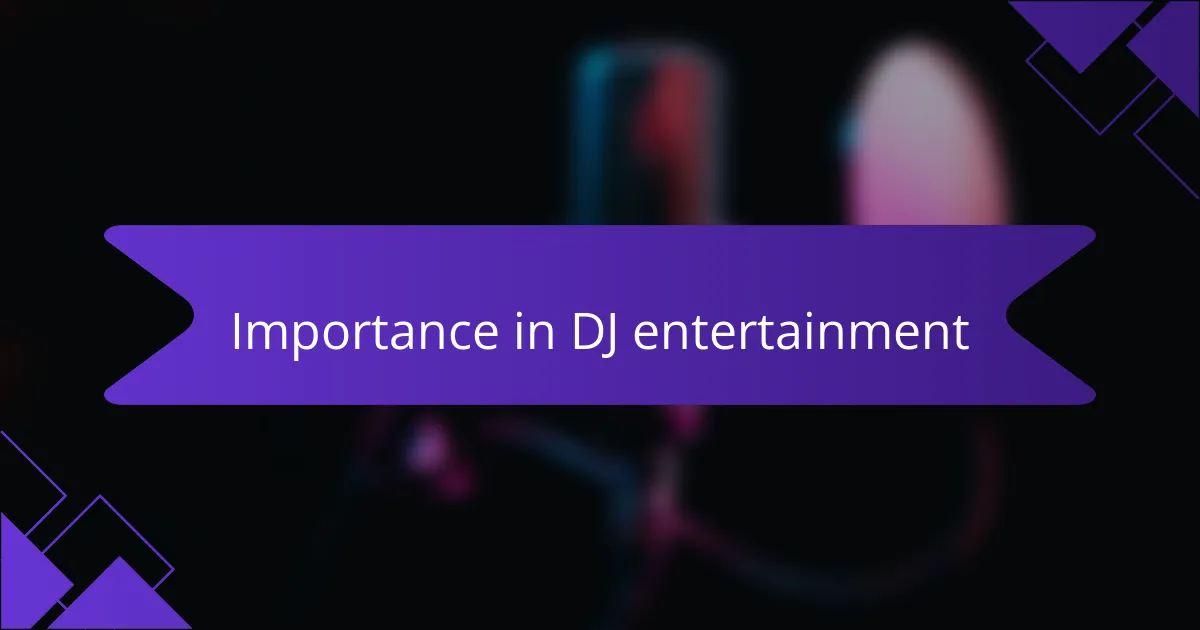
Importance in DJ entertainment
In DJ entertainment, the importance of live instrumentation cannot be overstated. When I see a live musician collaborating with a DJ, it’s like the heartbeat of the performance comes alive. Have you ever noticed how the crowd reacts differently when they hear real instruments? It’s as if the energy in the room shifts, drawing everyone closer together in a shared musical experience.
Live instrumentation also enhances the spontaneity of a set. I remember a night when a saxophonist jumped on stage, weaving in and out of the beats. That moment wasn’t just about the music; it was electric. It felt like anything could happen next, and the excitement in the crowd was palpable. This unpredictability creates a memorable experience that pre-recorded tracks simply can’t match.
Moreover, incorporating live instruments fosters a unique connection between the performers and the audience. I’ve seen firsthand how certain chords strummed on a guitar can evoke emotions that linger long after the last note fades. It’s an intimate exchange—an invitation for the audience to feel and respond to the music on a deeper level. This connection is why I believe live instrumentation is an essential part of any DJ performance.
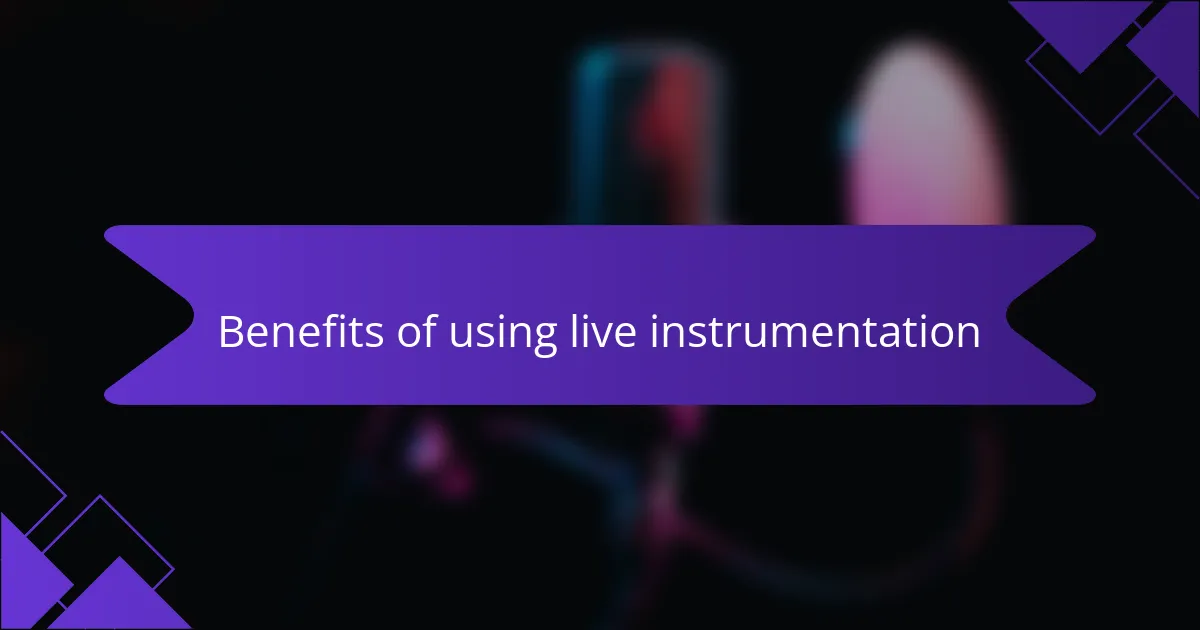
Benefits of using live instrumentation
Integrating live instrumentation into a DJ set not only adds vibrancy but also cultivates an infectious energy that draws the audience in. I remember one memorable event where a live percussionist joined us. The rhythmic layering transformed the whole atmosphere, making it impossible not to move. I mean, don’t you just love it when that beat takes you over?
Furthermore, live instrumentation enhances creativity on stage, allowing for spontaneous moments that can lead to unforgettable experiences. I vividly recall a night with a violinist who harmonized perfectly with the DJ’s beats. It felt like we were all part of a grand experiment, constantly evolving and pushing the boundaries of the music. Isn’t it exhilarating to think about what could happen next?
The emotional resonance of live music is another significant benefit I cherish. Each strum of a guitar or beat of a drum can evoke feelings that recorded tracks simply can’t replicate. I’ve seen audiences share tears and laughter as a musician pours their heart into a performance. It’s these moments that remind me why I love live music—it connects us all in profound ways.
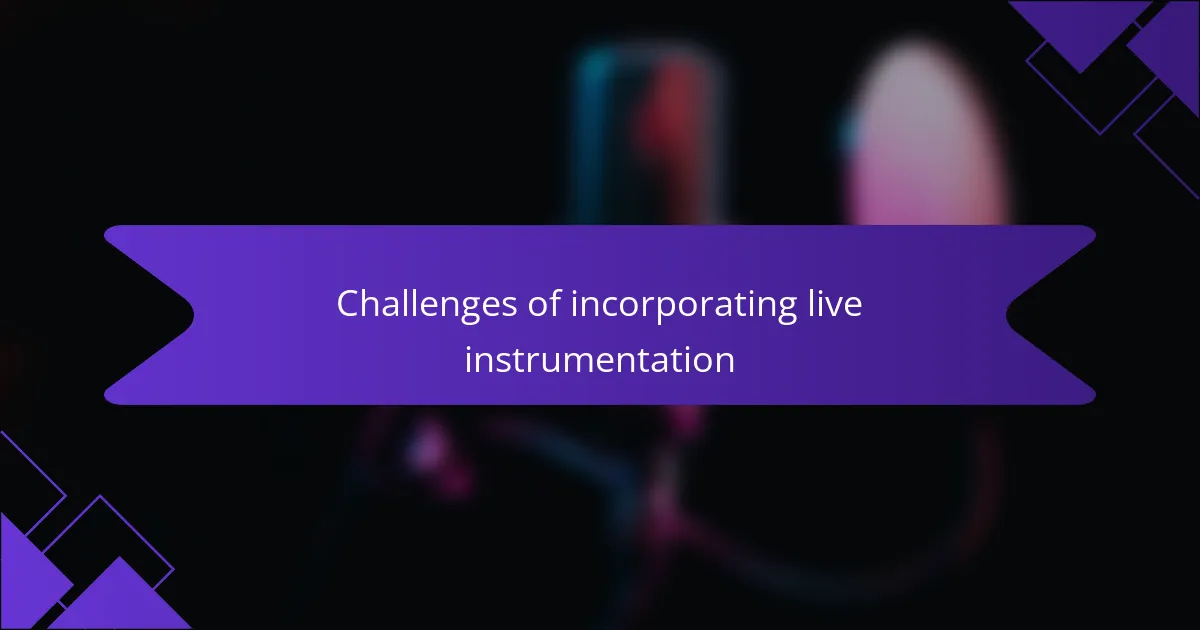
Challenges of incorporating live instrumentation
In my experience as a DJ, incorporating live instrumentation can create some unique challenges. One of the most significant hurdles is ensuring that the live musicians sync effortlessly with the electronic elements I’ve set up. I remember a gig where a talented guitarist joined me on stage, but we struggled with timing, and the energy of the set momentarily fell flat. It was a learning moment that reminded me how crucial communication and rehearsal are in these collaborations.
Another challenge is balancing the sound levels of live instruments with pre-recorded tracks. It’s essential to provide a dynamic range that elevates the performance without overshadowing either element. This often requires experimentation and adjustments during the show. I’ve learned that the perfect mix can transform a standard set into an unforgettable experience, so it’s worth the effort.
- Difficulty in achieving timing and synchronization between live musicians and pre-recorded beats.
- Balancing sound levels to ensure both live and recorded elements shine together.
- The need for extensive rehearsal and communication to minimize hiccups during a performance.
- Adapting to spontaneous changes that live musicians might introduce, requiring quick thinking.
- Ensuring a cohesive sound that maintains audience engagement throughout the performance.
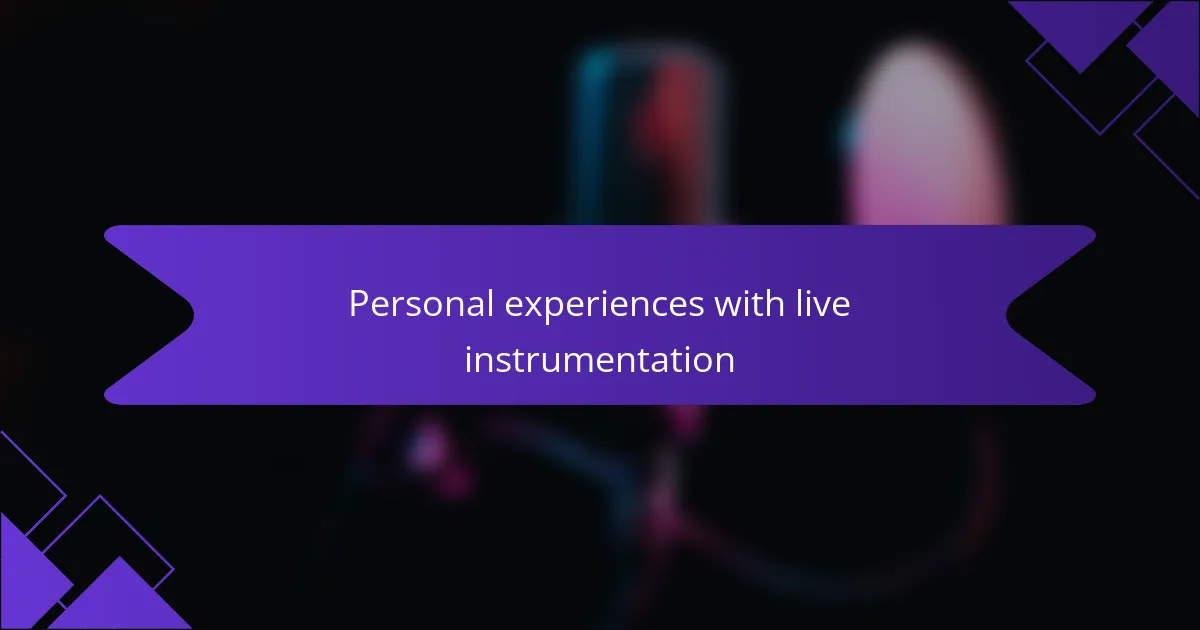
Personal experiences with live instrumentation
I’ve had my share of adventures with live instrumentation that left a lasting impression. I remember one night in a small club where a drummer seamlessly joined my set. His rhythm added a pulse that made every beat feel alive, and the connection I felt with both him and the audience was electric. Isn’t it amazing how a single instrument can change the entire vibe of a performance?
On another occasion, a talented flutist hopped on stage, surprising everyone, including me! As she played, the soaring notes intertwined beautifully with the electronic tracks. It created a moment where time seemed to stand still, and I couldn’t help but think: how often do you get to experience such spontaneous magic in a performance? It’s moments like these that remind me why I cherish live instrumentation so much.
There was also a time when a cellist brought tears to my eyes with a moving solo in the middle of my set. The emotional depth she added was powerful—and it resonated through the crowd like ripples on a still lake. Have you ever experienced music that touches your soul? That’s precisely what live instruments can bring, turning a good night into an unforgettable memory.
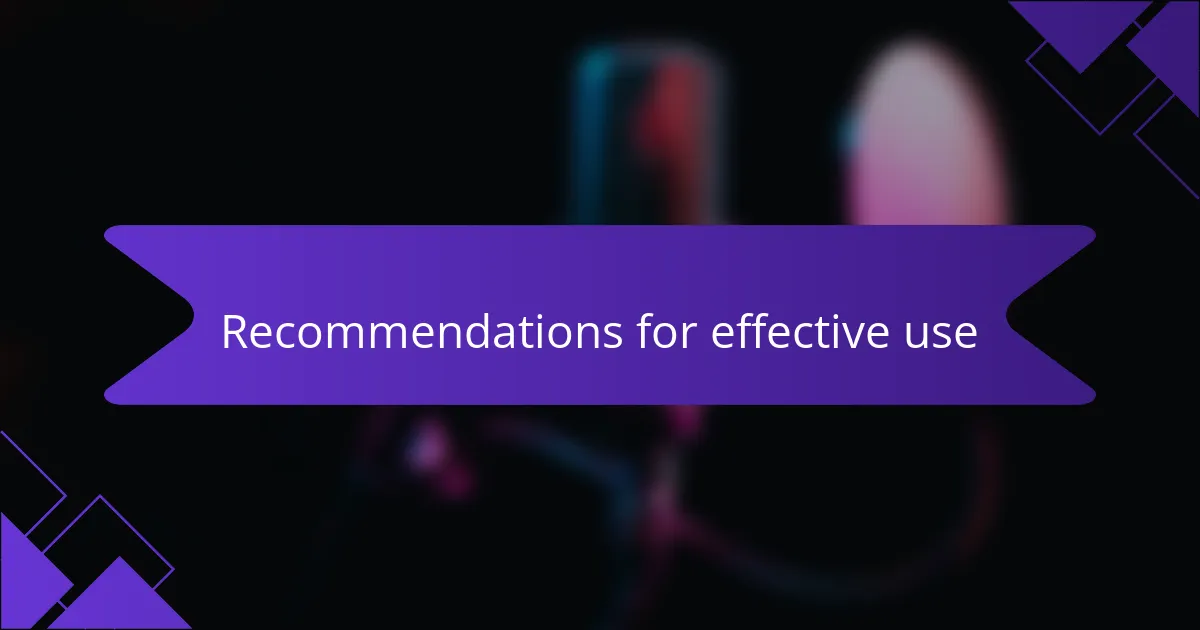
Recommendations for effective use
When exploring the effective use of live instrumentation in a DJ set, preparation stands out as a vital recommendation. I always emphasize the importance of rehearsing together beforehand. For instance, during one of my performances, I had a guitarist join me, and we spent a few hours syncing our styles. That preparation paid off immensely, and the result was a seamless flow that felt electrifying. How often do you see a performance thrive on good communication?
Another essential tip is to allow space for improvisation while maintaining a structure. I remember a show where a drummer took a bold solo that deviated from the planned tempo, and instead of panicking, I leaned into it. The crowd went wild, and that spontaneous moment became one of the highlights of the night. Isn’t it thrilling when you allow the music to guide you in unexpected directions? By embracing spontaneity, you foster a unique experience, creating lasting memories for both the performers and the audience.
Lastly, being mindful of the overall sound balance can enhance the performance significantly. I always keep an ear out for the mix between electronic and live elements. There was one gig where a live violinist nearly overwhelmed the beats due to volume issues. Thankfully, we adjusted throughout the set and found our sweet spot. It’s these little tweaks that can transform good into great. Have you ever noticed how just the right balance can amplify the entire vibe?
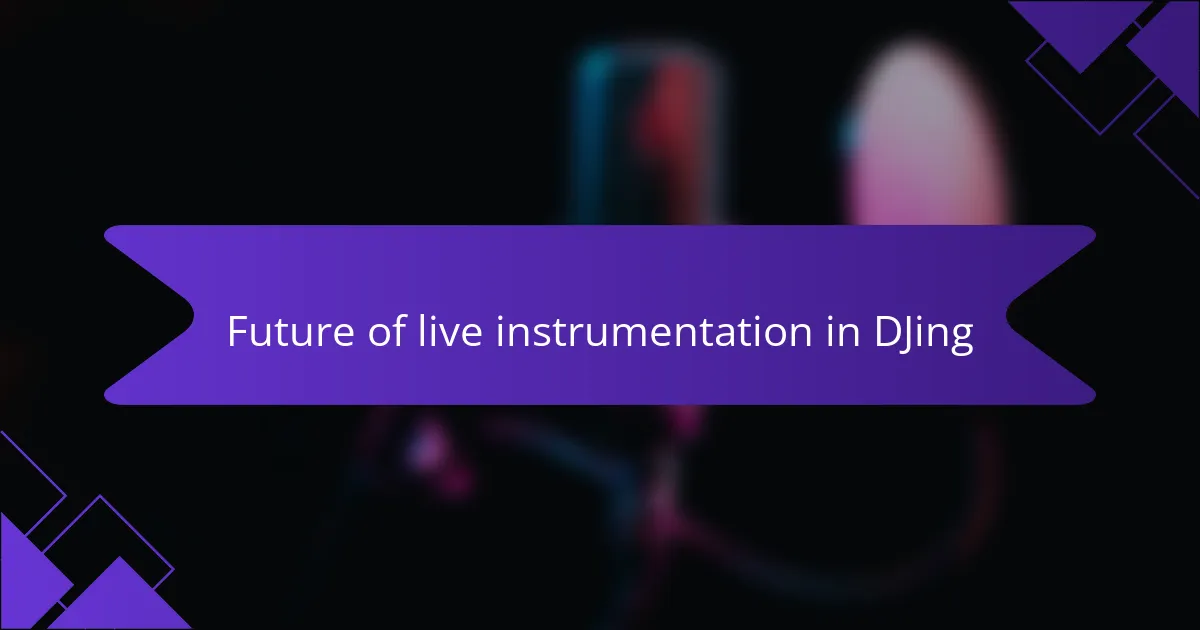
Future of live instrumentation in DJing
The future of live instrumentation in DJing is looking incredibly bright. As technology continues to evolve, I foresee a deeper integration between live instruments and electronic music. Imagine a world where every DJ set features not just a mixer, but also an array of live musicians collaborating in real-time. I’ve observed how well this concept resonates with audiences; they crave that authentic connection that only live instrumentation can provide.
As I look ahead, I can’t help but think about the potential for hybrid performances, where DJs might experiment with different genres and collaborate with musicians from diverse backgrounds. I remember one show where a DJ I admired brought in a sitar player. The fusion created an unforgettable soundscape that captivated everyone present. Can you imagine the richness that could come from merging traditional instruments with modern electronic beats on a larger scale?
In the coming years, I believe more artists will embrace this model, and technology will make it easier than ever to blend live performance with DJing. It makes me excited to think about the innovative ways we could push creative boundaries. I’ve always loved that moment when everything clicks in a live set. It’s electric! Isn’t it thrilling to envision the future possibilities where each performance could feel like a unique adventure, full of surprises woven into the fabric of the music?

